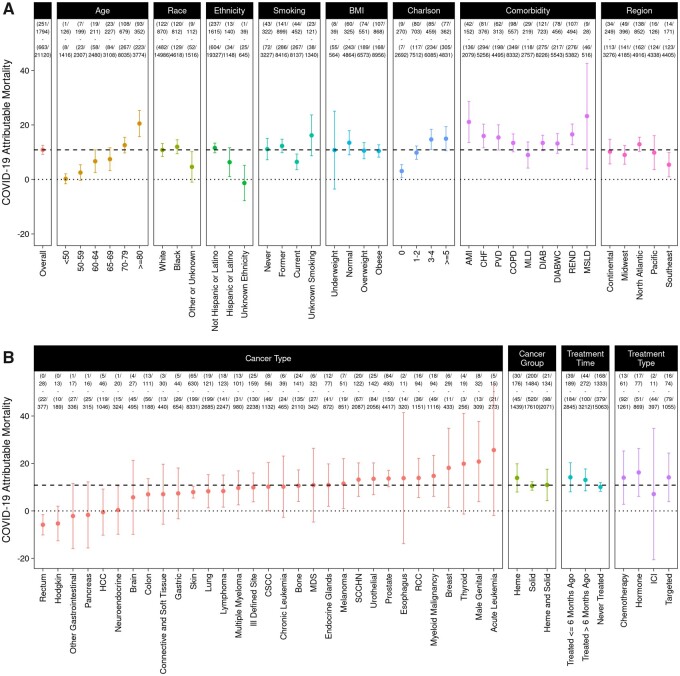Figure 3.
COVID-19–attributable mortality among cancer patients. COVID-19–attributable mortality defined as the difference in the percent mortality in COVID-19–positive compared with negative patients is shown, along with 95% confidence intervals. Panel A shows overall data and data stratified by age, race, ethnicity, smoking, BMI, Charlson score, comorbidity, and region. Panel B shows data stratified by cancer type, cancer group, treatment time, and treatment type. The dashed line shows the COVID-19–attributable mortality in the overall cohort (14.4%), and the dotted line marks 0, the point where there is no COVID-19–attributable mortality. The 4 rows at top show the number of COVID-19–positive patients who died, the total number of COVID-19–positive patients, the number of COVID-19–negative patients who died, and the total number of COVID-19–negative patients. AMI = acute myocardial infarction; BMI = body mass index; CHF = congestive heart failure; COPD = chronic obstructive pulmonary disease; CSCC = cutaneous squamous cell carcinoma; DIAB = diabetes without complications; DIABWC = diabetes with complications; HCC = hepatocellular carcinoma; Heme = hematological malignancy; ICI = immune checkpoint inhibitor; ICU = intensive care unit; MDS = myelodysplastic syndromes; MLD = mild liver disease; MSLD = moderate or severe liver disease; PVD = peripheral vascular disease; RCC = renal cell carcinoma; REND = renal disease; SCCHN = squamous cell carcinoma of the head and neck; Solid = solid tumor.

